What Questions are in the Chinese Civil Service Exam?
Can you solve them?
Following my article last summer on China’s college entrance exams, let’s look at an equally demanding test: the Chinese Civil Service Exam! This piece will jump into several actual exam questions, giving you a chance to test whether you could secure a coveted government role.
Picture this: you're a fresh college graduate in China, aspiring to one of the nation's most esteemed careers – a government official. This role is famously known as the “iron rice bowl.” Much like academic tenure in the United States, it signifies exceptional job security, ensuring you'll always have “rice in your bowl.” Beyond stability, government positions often come with superior benefits. Moreover, Chinese culture has a long-standing tradition of holding government service in higher regard than many other professions, including business. Since the job is appealing, landing a government post is nicknamed ‘going ashore’ (上岸).

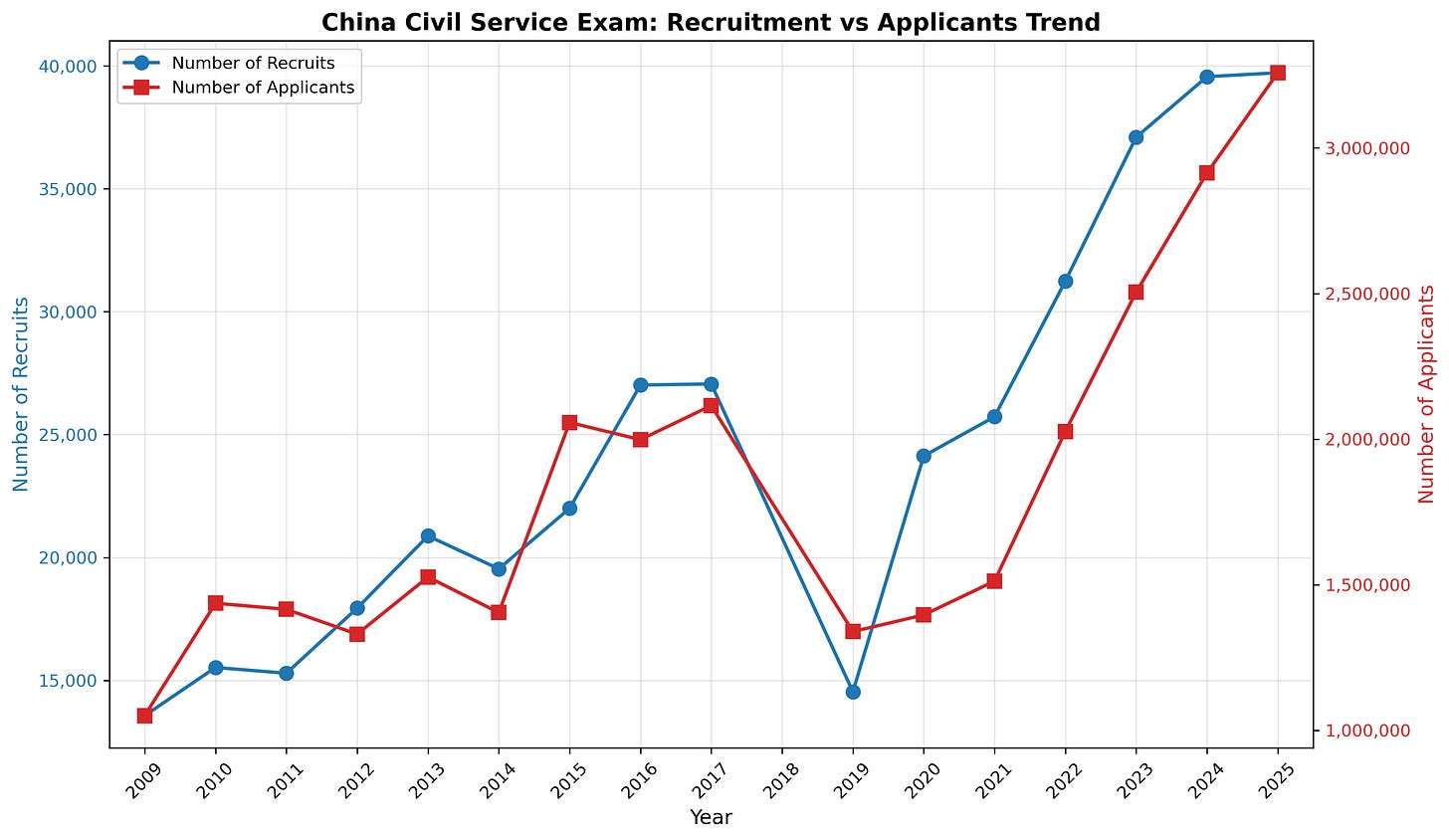
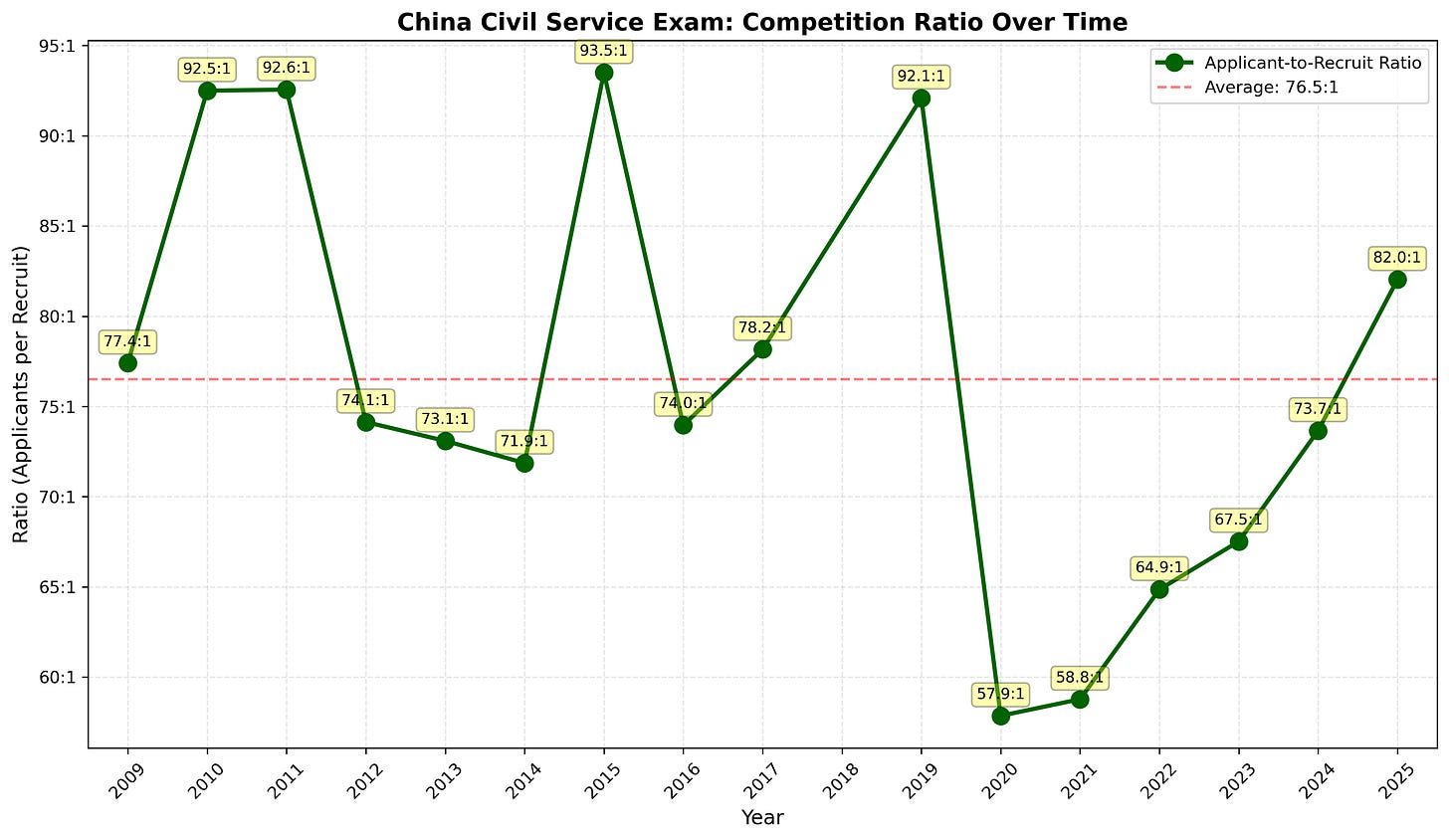
The appeal of a government career is undeniable. And so, you've made the decision, joining the more than 3 million young people across China who are diligently preparing for the National Civil Service Exam (the number goes to 8.5 million if you include Provincial Civil Service Exam applicants as well). Here are the questions that you will encounter in order to “go ashore.”
Are You Qualified?
Before taking the exam, we should look at the requirements for the applicants:
Hold the nationality of the People's Republic of China;
Generally be between 18 and 35 years of age (born between October 1988 and October 2006). For 2025 graduates with a master's or doctoral degree, the age limit is relaxed to under 40 years old (born after October 1983);
Support the Constitution of the People's Republic of China, support the leadership of the Communist Party of China, and support the socialist system;
Possess good political qualities and moral character;
Have the physical and psychological conditions required to perform duties normally;
Possess the work abilities required for the position;
Hold an associate degree or above;
Meet other qualifications required for the intended position as stipulated by the central civil service authorities.
The Written Test
The first part you will encounter is the Written Test.1 This test is split into two sections — the Administrative Aptitude Test and the Essay Writing Test. The Administrative Aptitude Test usually has 110-135 questions in ~120 minutes covering 5 areas: Common Knowledge Judgment, Verbal Comprehension and Expression, Quantitative Relations, Judgment Reasoning, and Data Analysis. Each question can be worth 0.5-1 point with a final total score of 100.
The second section, the Essay Writing Test, is subjective, including summarization and generalization questions, questions requiring the proposal of countermeasures (or solutions), comprehensive analysis questions, official document writing, and a major essay, among others. Given the length of this piece, I will cover that section in a separate article.
Administrative Aptitude Test
Common Knowledge Judgment
The Common Knowledge Judgment questions include several questions about the CCP (Chinese Communist Party)’s important speeches or history, and some common-knowledge questions. You will see several questions like this:
The answer is C. This is mainly just memorization.
Then you will encounter some more general common-knowledge questions like this:
The correct answer is C.
Verbal Comprehension and Expression
The next few questions are on Verbal Comprehension and Expression. These questions are like GRE verbal tests, where you fill in the blanks with words that fit the sentence the best. Since this relies on knowing Mandarin, I will not discuss it here.
Quantitative Relations
Next is the Quantitative Relations section. The first few are usually about finding the patterns like this one:
The answer is D. Observe the odd-positioned terms in the given sequence: -2, 0, 26, 124. Notice that if you add 1 to each of these numbers, they become cubes of consecutive odd numbers, -1, 1, 3, 5 and the next should be 7^3 -1 = 342.
The answer is B. Firstly, the second hand tip of the clock has gone 5 full rotations, meaning that 5 minutes passed. Therefore, the area swept by the minute hand is:
30/360×π×3^2=0.75π.
To summarize, these questions seem not too hard to solve (comparable to GRE questions, in my opinion), except that it is a little wittier.
Judgment Reasoning
These questions always confuse me the most. The weirdest part is pattern recognition. I often find the pattern somewhat ad hoc. Some online comments even refer to this part as “you know, the government needs people who are just purely lucky.” Anyway, let’s dive in.
The answer is C. Why? Well, the explanation is that, observing from left to right:
Figure 1 has two white sections, with white dots numbering 5 and 5 respectively;
Figure 2 has two white sections, with white dots numbering 6 and 4 respectively;
Figure 3 has two white sections, with white dots numbering 5 and 5 respectively;
Figure 4 has two white sections, with white dots numbering 6 and 4 respectively;
Figure 5 has two white sections, with white dots numbering 5 and 5 respectively.
Therefore, the figure to be placed in the "?" position should also have two white sections, containing 6 and 4 white dots, respectively.
Let’s do one more since those questions are so “fun”:
The answer is D. You have to count the number of straight lines in each graph. There are, from the first graph to the last, 5, 6, 7, 8, 9 straight lines respectively. The figure in “?” should have 10 straight lines and thus, D is the answer.
Now, try one on your own!
Leave your answer in the comments!
Of course, Judgment Reasoning also includes other questions without figures, such as this one about definition:
The answer is D.
Another type of question in this section is analogies:
The correct answer is D, because the two roles in D have a subject–object relationship.
Lastly, you will also encounter logic judgment questions like:
The answer is D.
Data Analysis
The last few questions are about analyzing some financial or operational data. Here is one example:
The correct answer is B.
Did You Pass?
Remember, the exam is 2 hours long, so 1 minute for each question! Usually, you will need around 60 out of 100 points on the Administrative Aptitude Test to have a chance to apply for popular positions. For example, to apply for provincial-level or above positions in the 2019 National Civil Service Exam, candidates must achieve at least 60 in the Administrative Aptitude Test. Other lower-ranked positions or positions in Western China have lower requirements for the Administrative Aptitude Test, but a minimum score of 45 is still required.
Below, I also plot the overall level of competition in each province by using the total participants / total recruits for positions in each province. However, please also note that this is already the result of an equilibrium where some provinces accept applicants with lower scores. The numbers of recruits and applicants are particularly high in Guangdong, Shandong, and Beijing.
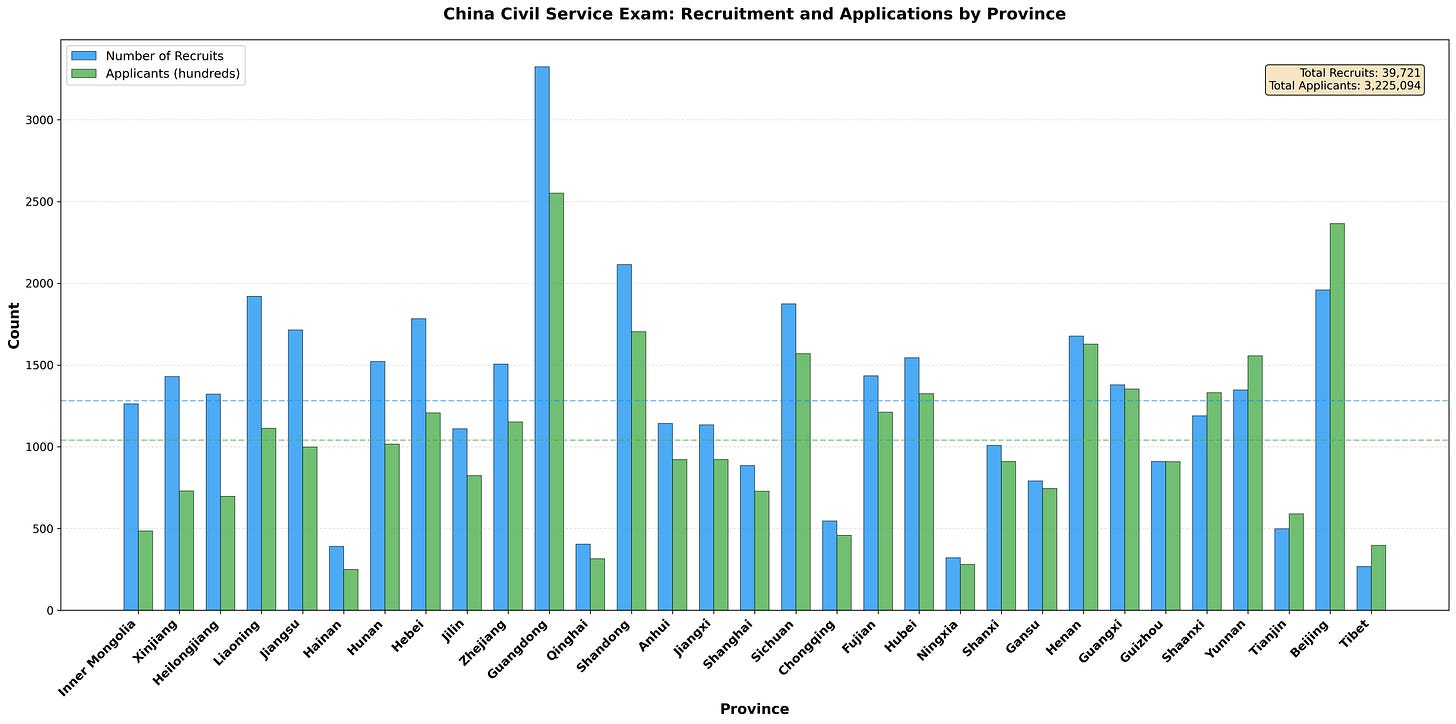
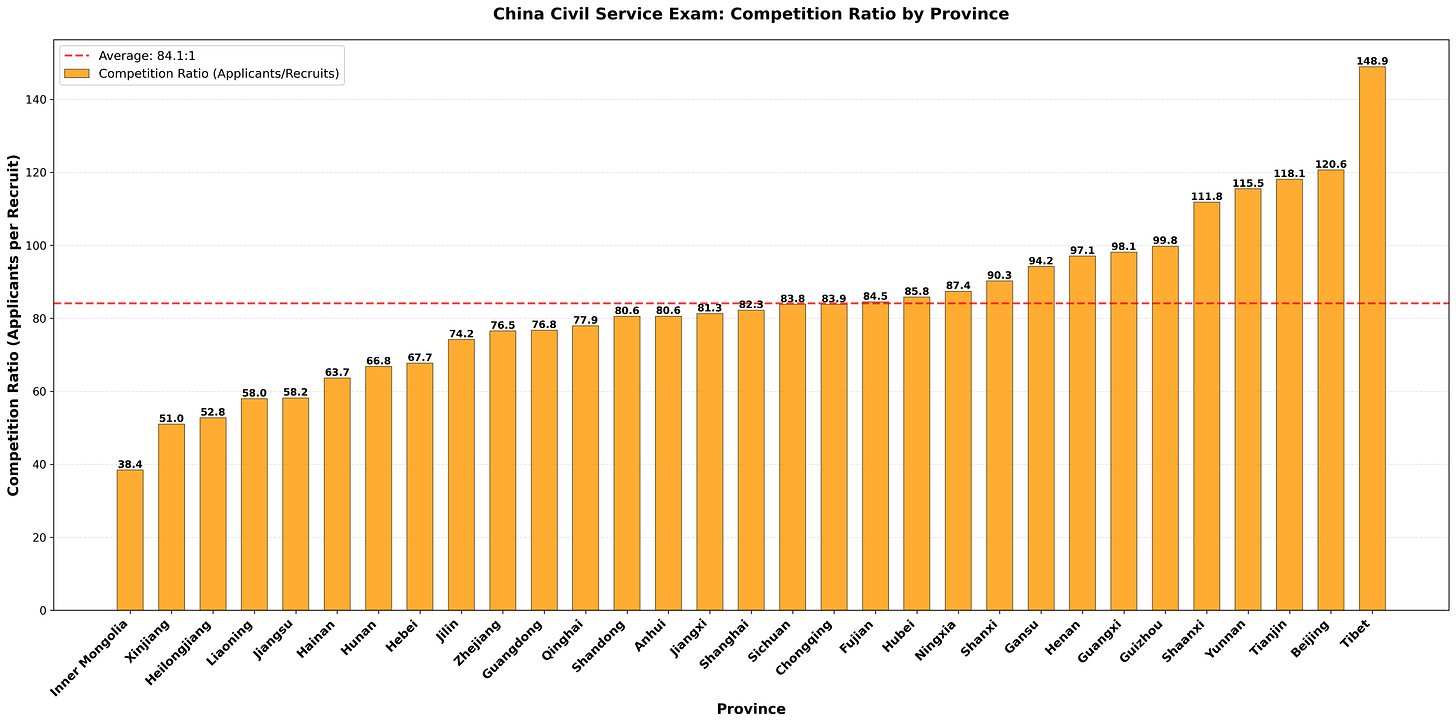
What do you think? Could you pass, and which province would you target?
Aside: AI Models Still Struggle With Pattern Recognition
One thing that I find interesting is that AI models seem to do pretty badly on the Pattern Recognition part of the exam. For example, for this question:
GPT o3’s answer was:
Because of AI models’ inability to solve those visual questions, we also see similar Pattern Recognition questions in US firms’ screening tests. (If anyone wants to make a Chinese Civil Service Exam benchmark out of this, let me know!)
I included questions from both national and provincial Civil Service Exams.


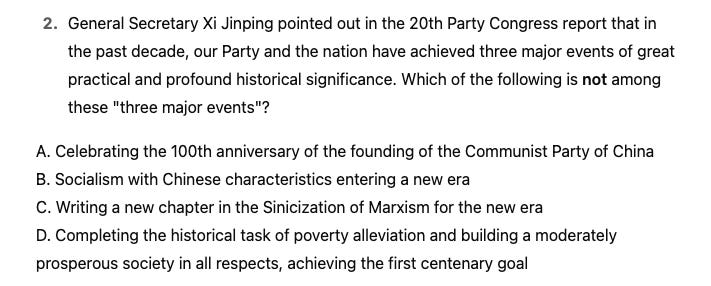
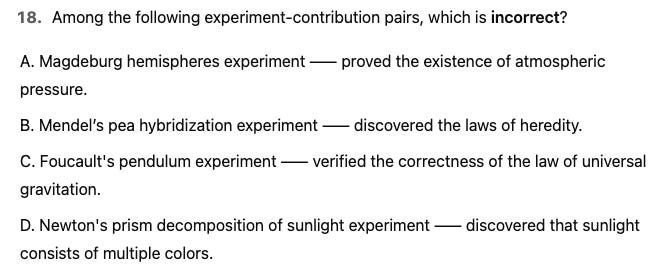
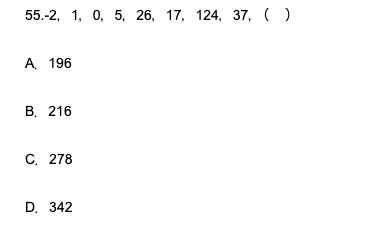

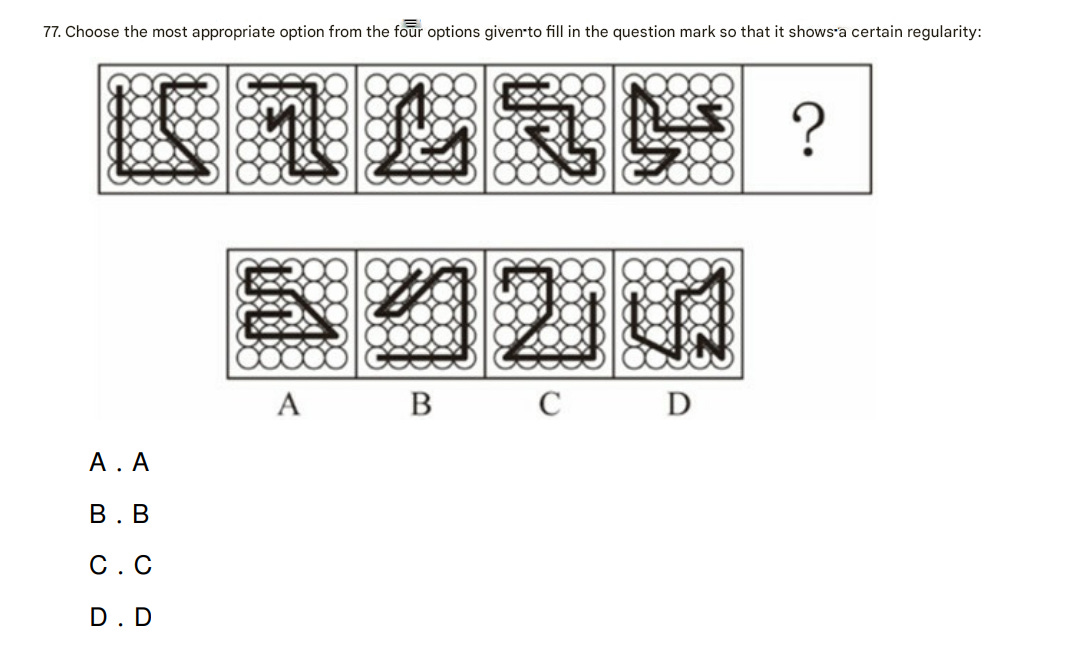
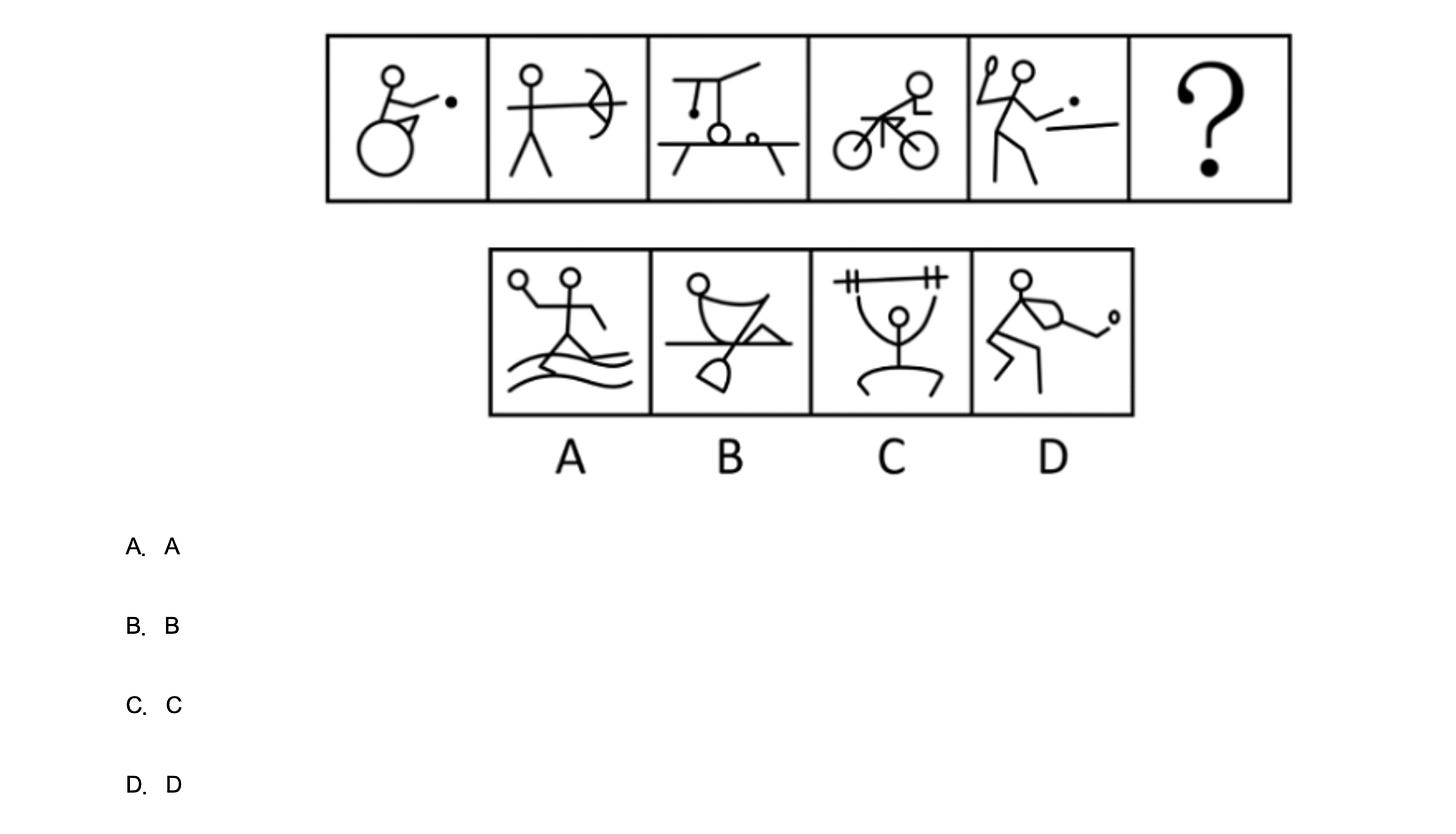
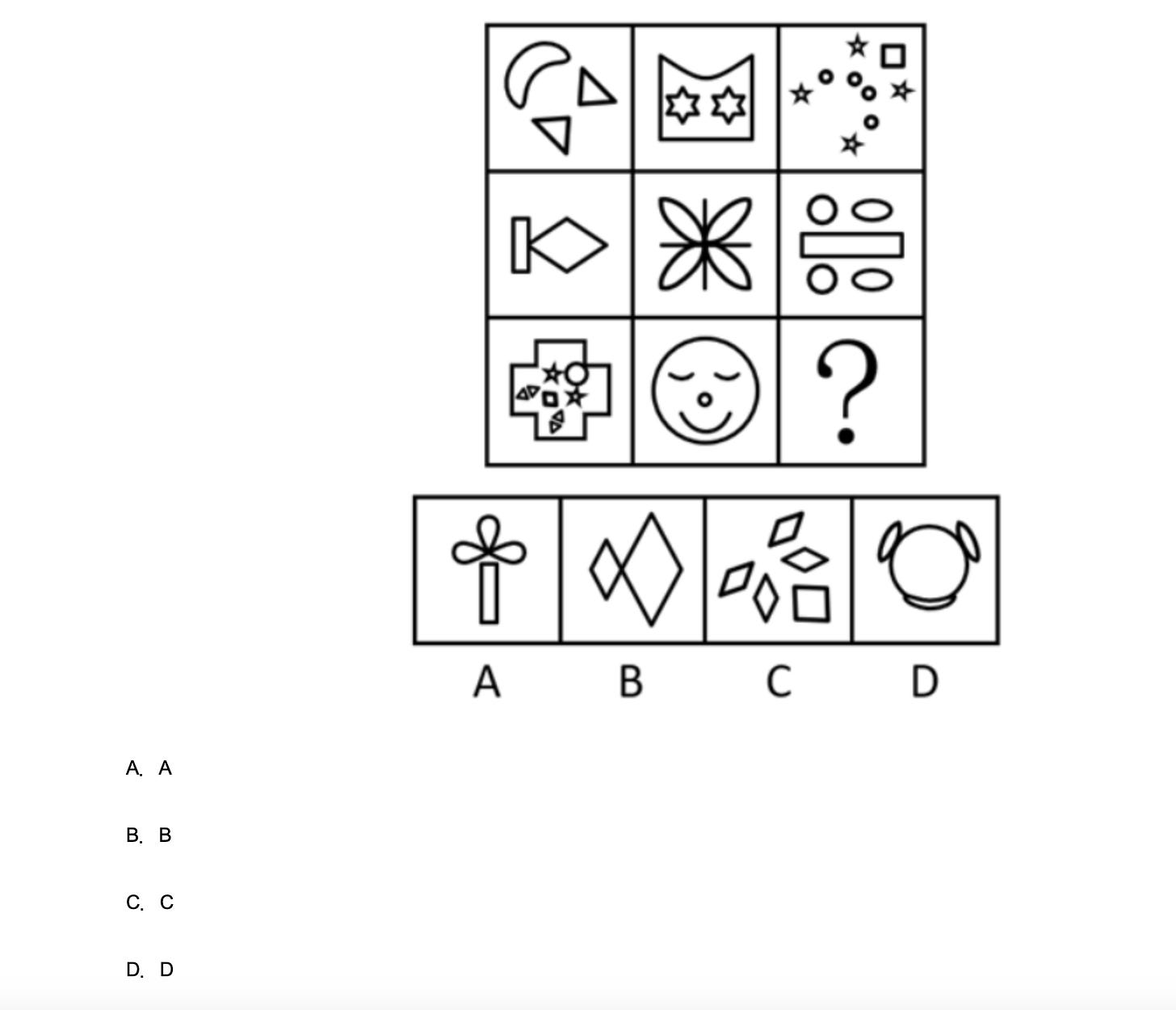
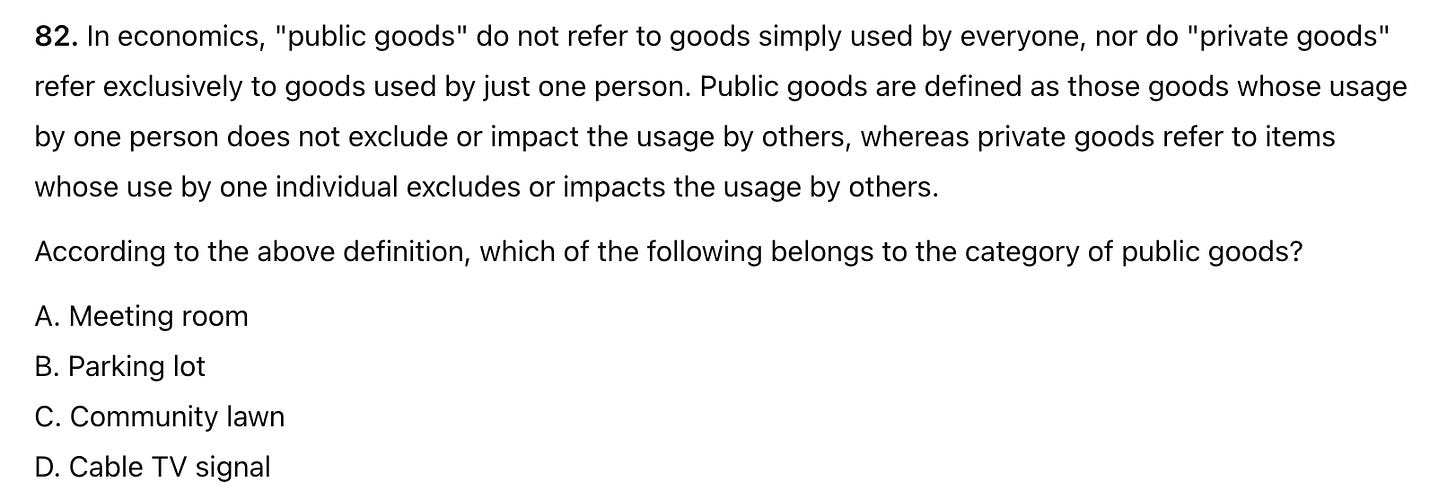
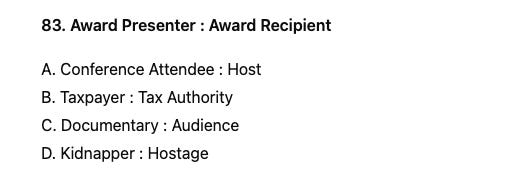
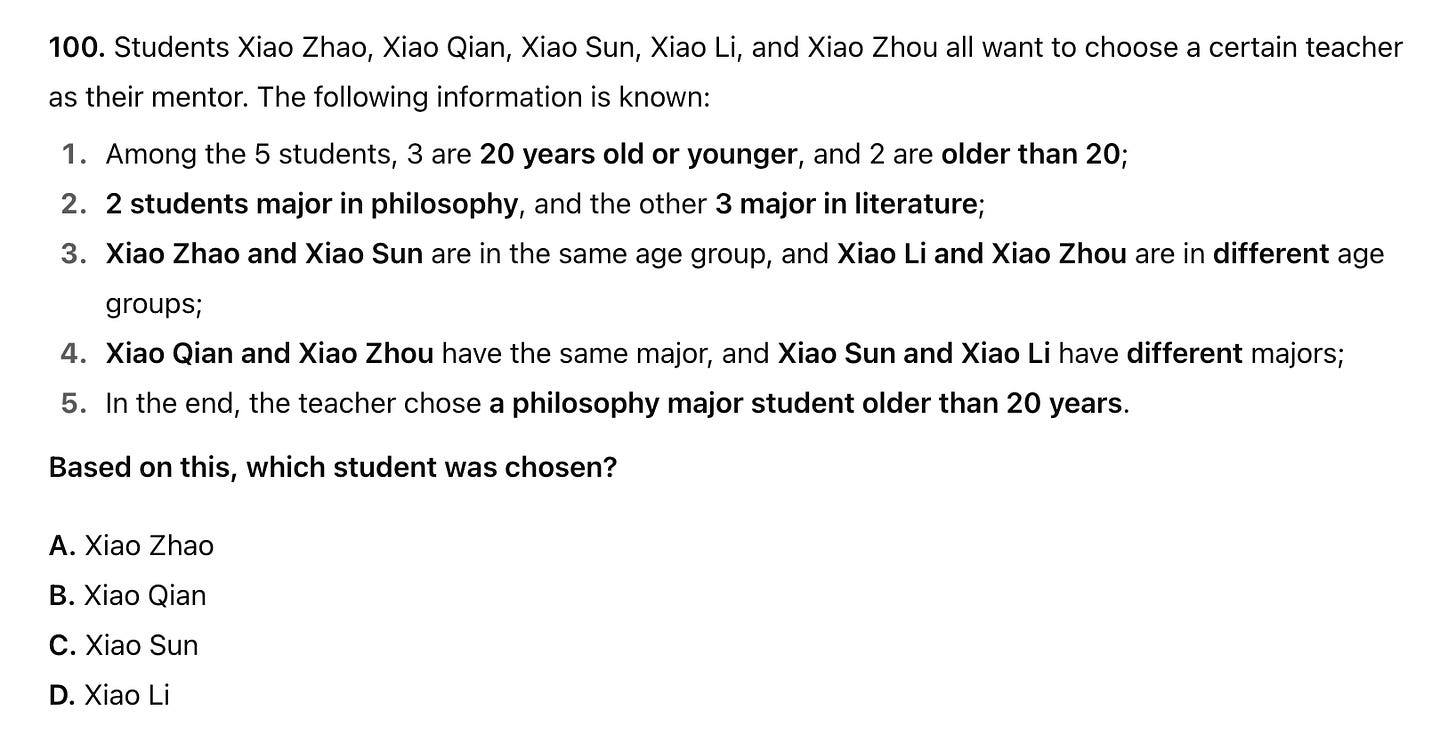

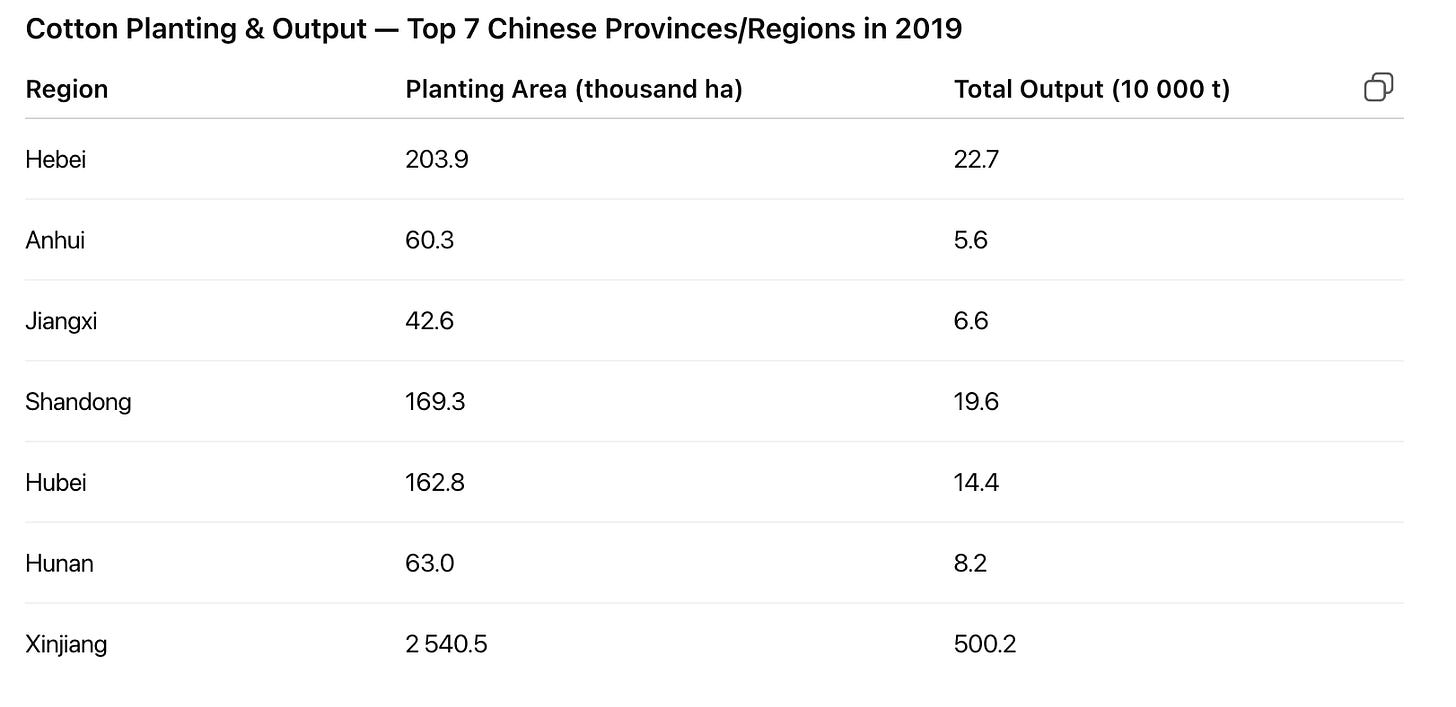
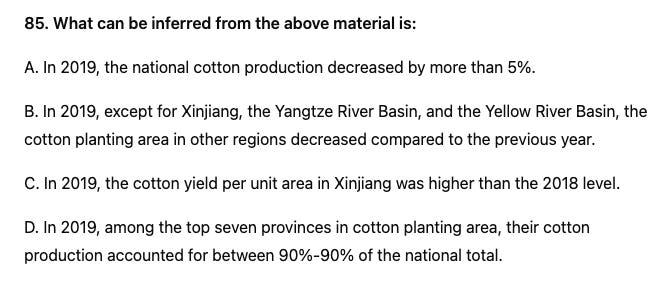
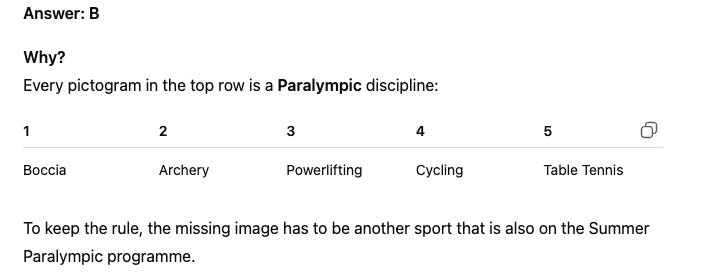
这个角度太有意思了!i had so much fun reading this piece 写的超级棒